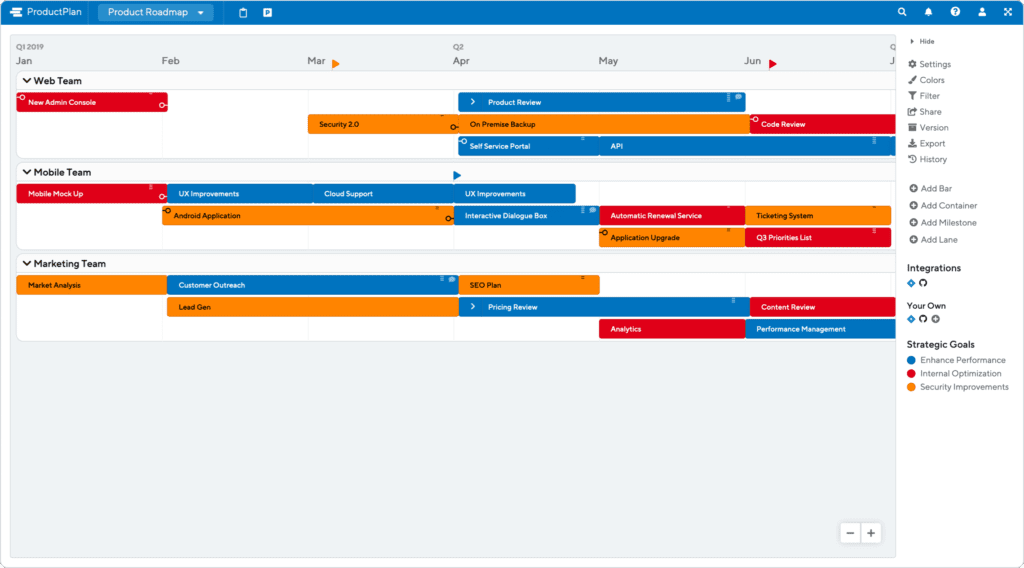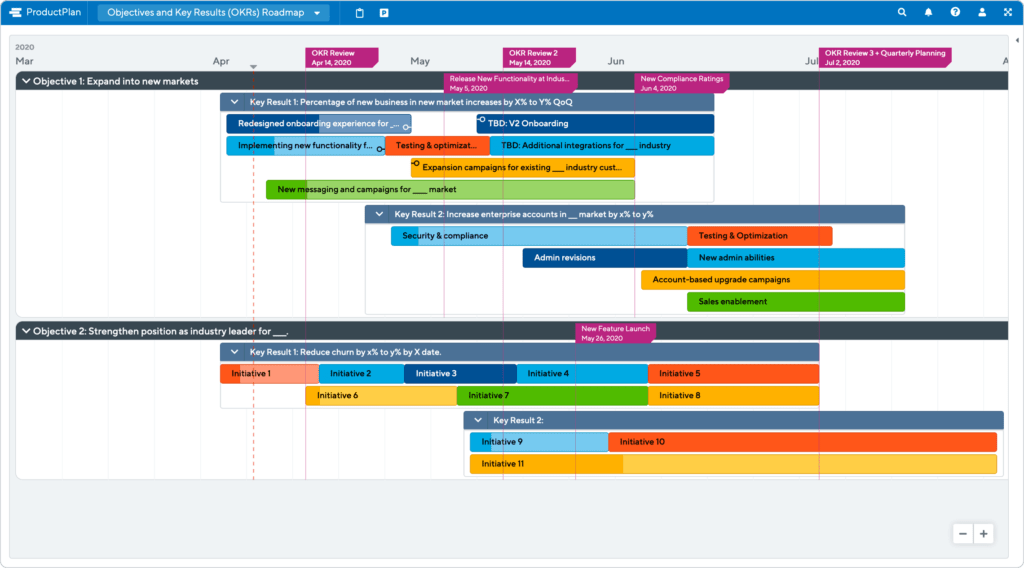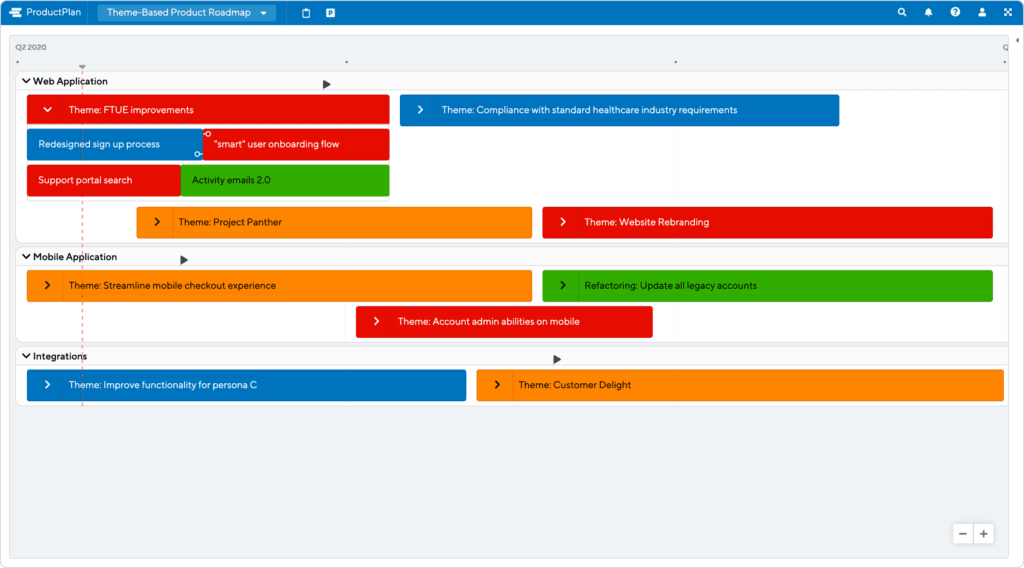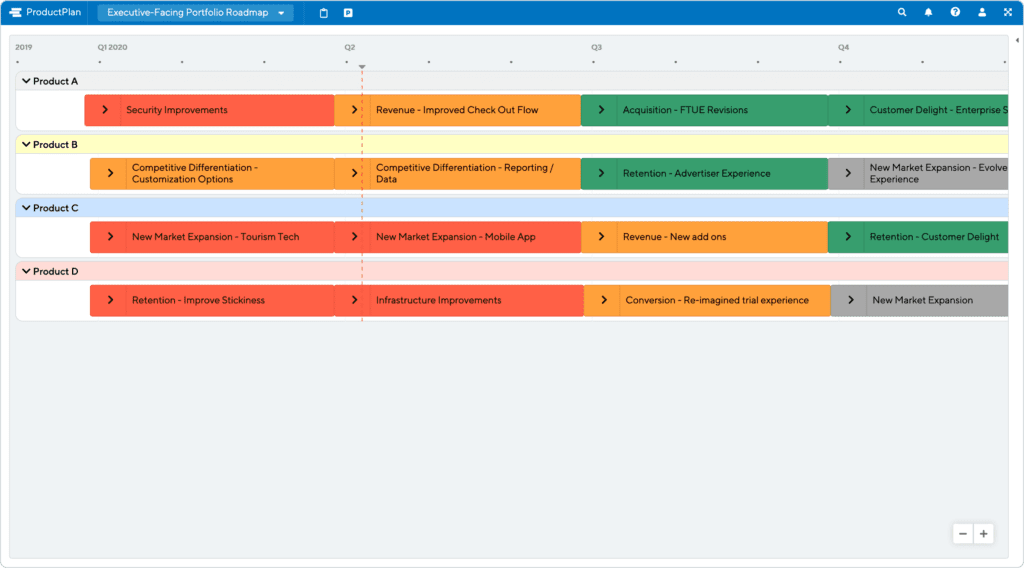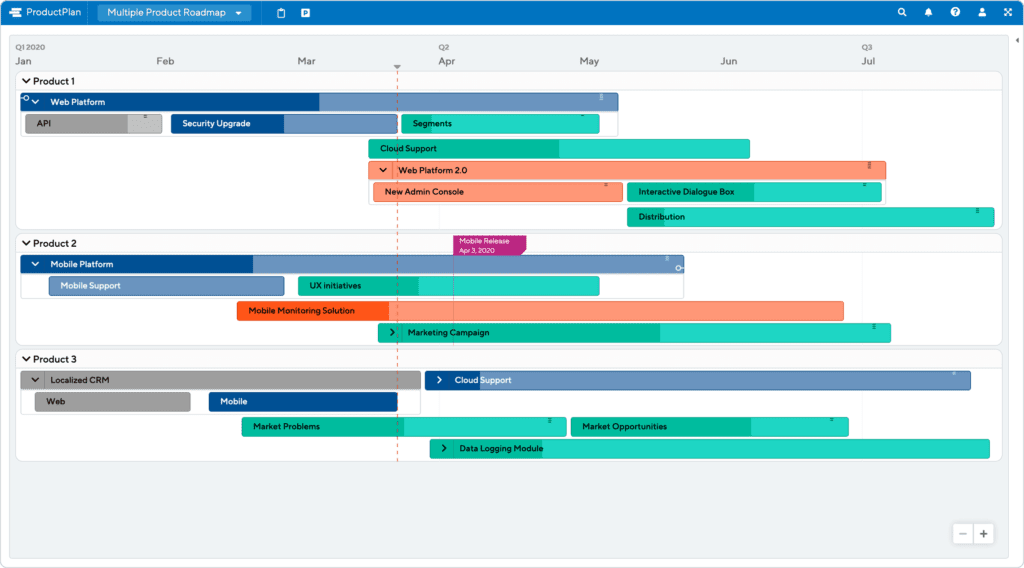Product roadmaps shouldn’t be a one-size-fits-all proposition, as different stakeholders care about various elements and require different levels of detail. With this in mind, it’s essential to tailor the product roadmap to the particular people it’s being presented to.
By customizing product roadmaps for their intended audience, lots of confusion and unnecessary, sidetracking conversations can be avoided. Limiting the information presented to only what’s required for a particular recipient keeps the focus on what’s important to them and which types of feedback or decisions they need to provide.
It holds for salespeople, customers, investors, and board members, and it also remains the case for product executives. Even though their area of expertise is the product, a product leader also doesn’t need to concern themselves with the nitty-gritty details and must keep their focus at a higher, strategic layer.
The goal is effectively and efficiently communicating with product executives while providing them with enough information to make decisions while not drowning them in minutiae and irrelevant data. Which product roadmap you use can make a huge difference. The following five roadmap templates are excellent candidates for this task.
5 Roadmap Templates for Product Executives
1. Traditional Product Roadmaps
Product roadmaps can be an excellent resource for product executives in several areas. By design, these roadmaps provide a high-level overview of the prioritized initiatives scheduled for delivery in the near term.
Unlike a project plan, there’s little focus on specific tasks and minor elements, keeping the discourse at an appropriate detail level. It’s all about major initiatives and their key sub-projects and milestones.
The relatively short timeline of a product roadmap also keeps executives locked in on what’s most important. Using a template with a six-month window keeps everyone’s attention on what’s currently underway and what’s next in the queue without distracting folks by predicting 18 months out (and quite likely to change dramatically in the interim).
Using swimlanes to denote which initiatives are the responsibility of different teams, executives can still get a sense of who is working on which specific areas, but they don’t need to wade into the minutiae of resource allocation.
2. OKR Roadmaps
Product executives care far more about results than process, and an OKR roadmap puts the emphasis squarely on what’s being achieved rather than how things get there. Objectives & Key Results is a business management strategy that ties every objective back to the overall strategy.
Those strategies could lie at the company level, a particular region or department, or maybe even the product itself. Regardless of how granular, all of these results are measurable, and achieving these specific, trackable goals should be everything the team does.
With well-established and understood OKRs, prioritization exercises will elevate initiatives that drive key metrics the organization is focused on, eliminating some of the noise and lobbying for other items that don’t impact an OKR.
Using an OKR roadmap template, product teams can demonstrate what steps they’re taking to achieve the desired results and illustrate that other priorities aren’t stealing away resources from those core activities. Dedicated swimlanes for each OKR connect the dots between specific initiatives and features and the big picture results they’re intended to produce.
3. Theme-Based Product Roadmaps
Themes are a magic ingredient for any product roadmap. Instead of listing out every feature or enhancement and prioritizing items based on somewhat arbitrary criteria, themes focus on big-picture goals and less on implementation details.
Theme selection is driven by the strategic goals of the organization, such as increasing growth, decreasing churn, or increasing penetration in a new vertical market. The particular development items to achieve these goals aren’t determined until much closer to the implementation phase, allowing maximum flexibility and relying on the latest and greatest data and insights.
Theme-based roadmaps leave out the specifics, which keeps executives from deep-diving into implementation triviality. They even take specific dates out of the picture, relying on more generalized targets such as a particular quarter. And swimlanes can be incorporated to indicate which aspect of the product or team is working on a given theme during a particular phase.
It frees up product executives from zooming in on the particulars, instead of letting them zoom out to worry about the big picture. It also keeps conversations centered around the “why” behind development efforts instead of the finished results.
4. Executive-Facing Portfolio Roadmaps
Executives want and need a high-level, strategic view. Creating a roadmap just for that audience means the spotlight stays trained on what’s moving the needle for the goals and KPIs they care about most. Staying as general and directional as possible, an executive-facing portfolio roadmap can easily communicate initiatives, goals, themes, and priorities without straying from a holistic view.
The idea here is to convey big-picture plans at a glance, with the option to drill down if needed, with containers nestled beneath the main projects. A one-year horizon is usually sufficient, as it gives them a look at what’s on the cusp and what’s soon to follow without polluting the vision with less concrete plans further in the distance.
As the roadmap timeline extends, there may be less certainty about particular initiatives, so each one can be color-coded accordingly to communicate this information. And since this roadmap encompasses the plans for multiple products, swimlanes visually separate the various products in the portfolio. This lets them see how each product’s main initiatives complement each other to paint a broader story for the entire organization.
The ability to view the entire product portfolio in a single glance adds crucial context to executives who aren’t just worried about a single product. This can facilitate broader alignment both across the portfolio and within the organization. Different departments and managers can all see the really big picture beyond their areas of focus.
5. Multiple Product Roadmaps
Finding the sweet spot between too much information and not enough can be tough, especially when there are multiple products involved. This type of roadmap stakes out the middle ground, offering up just enough detail to see what’s happening with each product without completely overwhelming an executive audience.
The goal is to show the highest priority initiatives for each product, all in one view. These are the big-ticket items executives care most about and are likely to have the biggest impact on key metrics and objectives.
This roadmap template requires a little discipline and the ability to edit things down to truly matters. It’s not always easy to yank a favorite feature or pet project out of the spotlight, but that’s what this presentation calls for. If an executive wants to see more, they can dive into a specific product’s roadmap at a different time.
Creating a multiple product roadmap is about making the most of limited real estate, leveraging color-coding and swimlanes to pack as much important info in there without overwhelming the audience or cluttering things up.
Since it’s a lot of information to take in, a shorter time horizon is a safe bet. This roadmap format is particularly helpful for product managers responsible for multiple products and allocating shared resource pools.
Many Views from a Single Source
After looking at each of these product roadmap templates’ pros and cons, you might be hesitant to pick one and commit to it. Luckily for you, you don’t have to make that choice.
With a purpose-built roadmapping tool like ProductPlan, the same information can be used with multiple templates depending on the desired purpose and specific audience in question. Using filters and tags, extra details can be hidden away so only the pertinent information is presented to executives.
And since it’s a real-time view of the latest updates, every product roadmap will always be accurate and up-to-date, sparing anyone from using outdated information to make decisions or share with stakeholders.
But don’t forget, no matter how great your roadmap may be, how you present it to executives is equally important. The best-laid plans can be scuttled if they’re not delivered with confidence and concise clarity executives demand.

